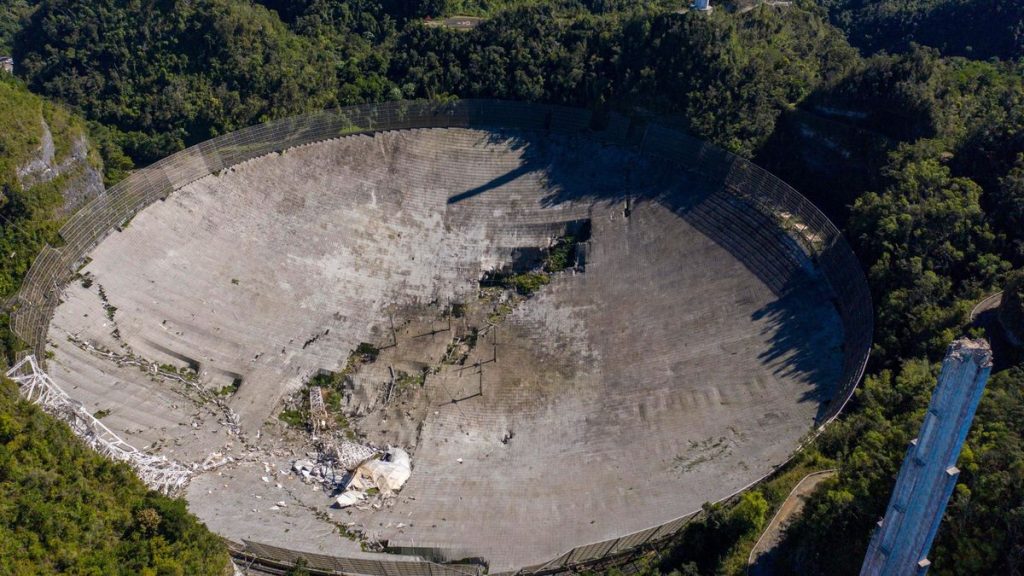
4 years after the giant Arecibo Observatory collapsed, we finally know what happened (Image Credit: Space.com)
What does the discovery of a binary pulsar in 1974, the discovery of the first exoplanets, and the most powerful message humans have ever sent out into space all have in common? They all happened at the Arecibo Observatory in Puerto Rico.
With a spherical reflector dish that was 305 meters (roughly 1000 feet) in diameter, Arecibo held the title of world’s largest radio telescope for over half a century — from its construction in 1963 until 2016. To the dismay of astronomers around the world, in 2020, Arecibo’s reflector dish collapsed when support cables gave way, leading to the eventual decommissioning of one of science’s most fruitful instruments.
Not long after the decommissioning, the National Science Foundation and the University of Central Florida began an investigation into the primary causes of the collapse — and after nearly four years of investigation, the Committee tasked with finding an explanation have finally released an official report detailing its findings.
In the report, the Committee writes:
“After analyzing the data and the extensive and detailed forensic investigations commissioned by the University of Central Florida and the National Science Foundation (NSF), the committee consensus is that the root cause of the Arecibo Telescope’s collapse was unprecedented and accelerated long-term zinc creep induced failure of the telescope’s cable spelter sockets.”
The reports details how structural failure of the telescope likely began in 2017 when Hurricane Maria hit the Observatory which “subjected the Arecibo Telescope to winds between 105 and 118 mph … the winds of Hurricane Maria subjected the Arecibo Telescope’s cables to the highest structural stress they had ever endured since it opened in 1963.”
According to the report, inspections were conducted after the hurricane, but no significant damage was deemed to have jeopardized the telescope’s structural integrity. Still, repairs were still ordered — yet these repairs were delayed for years. And, as the investigation states, they were targeted “toward components and replacement of a main cable that ultimately never failed,” which suggests the repairs would not have prevented the eventual collapse of the Observatory’s reflector dish even if they weren’t delayed.
Eventually, in August and September of 2020, an auxiliary and main cable failed, leading the NSF to announce the decommissioning of the telescope through a controlled demolition. More support cables gave way on Dec. 1, 2020, causing the instrument platform to collapse into the dish itself. Thankfully, no one was injured by the cable failures.
The report continued to detail how hidden outer wire failures triggered the collapse, which had fractured due to shear stress from zinc creep (or zinc decay) in the telescope’s cable spelter sockets. Unfortunately, this issue was not identified during the post-Maria inspection, which meant engineers hadn’t considered the degradation of these mechanisms as a source of a potential future collapse.
Despite Arecibo’s discovery days being over, the observatory will be remade into a education center known as Arecibo C3. Hopefully, the decommissioned observatory can inspire the next generation of astronomers to make discoveries as impactful as those made at Arecibo during its days peering out into the universe.





